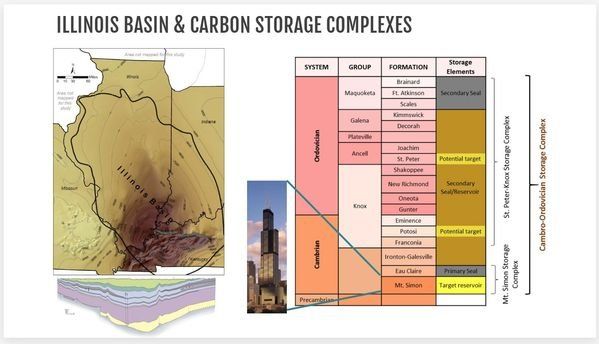The Science of Carbon Capture and Storage

The Science of Carbon Capture and Storage
Dr. Sallie Greenberg’s experience and depth of knowledge makes her an expert on the science behind carbon capture and sequestration.
Greenberg, the former Principal Research Scientist on the Illinois Basin- Decatur Project dove into the science and safety of carbon storage in a webinar for members of the IL Corn Grower Association.
“We’ve spent the last two decades sharing the information and the knowledge gained from our understanding to be able to do this…safely and effectively,” said Greenberg.
Store History and Prime Location
In 2003, the Illinois State Geological Survey was one of numerous organizations to participate in the Regional Carbon Sequestration Partnership Program. Greenberg said the group has worked in “very, slow, very deliberate” phases since the beginning of the program to ensure accurate and safe results.
After characterizing the area’s potential storage and running a pilot enhanced oil recovery and saline storage project, phase three of the carbon storage plan began in 2008 when the organization applied for a U.S. and Illinois Environmental Protection Agency Class VI CCS well permit. Following its approval, the Decatur Project began sequestering carbon in 2011.
In addition to extensive research, Greenberg said Illinois’s unique geology is the key to the state’s notable opportunity for carbon storage. The Illinois Basin is a geological feature underlying most of Illinois, along with parts of Indiana and Kentucky. From an aerial view, the basin stretches 60,000 square miles.
During her presentation Greenberg pointed to a colorful, cross section illustration of the Illinois Basin. On the slide she indicated an important feature, the Mount Simon Sandstone Reservoir, a layer of rock 5,500 feet below the surface. The reservoir is capped by the Eau Claire, a 450 feet shale layer that acts as a seal for the sandstone rock formation.
“If you think about a seven-layer salad, that's sort of what the Illinois Basin is,” said Greenberg. “It's a hard casserole dish with different layers of different rock types.”
Safety and Monitoring
Reiterating the project’s safety, Greenberg sited aspects of monitoring at the site. Fiber optic cables line the walls of the well allowing the organization to always measure the pressure and temperature of the carbon dioxide. The project includes ports and pressure gauges that allow scientists to take fluid samples and measure gas pressures.
Additionally, seismic trucks send sound waves through the earth’s surface. The monitors take four-dimensional photos of the rock formations and track carbon dioxide. Greenberg said in addition to extensive monitoring, Class VI well permit operators must send quarterly data to the EPA to ensure operations are safe.
Looking to the future, Greenberg said she sees a demand for carbon capture and storage. In the last decade, she said CCS technology has remained a priority regardless of politics.
“We need oil and gas. We need nuclear. We need renewables. We need ethanol. We need biofuels,” said Greenberg. “We need carbon capture and storage, as part of that portfolio. It allows us to be flexible in a changing geopolitical world, but also, in changing economic times.”











































































































